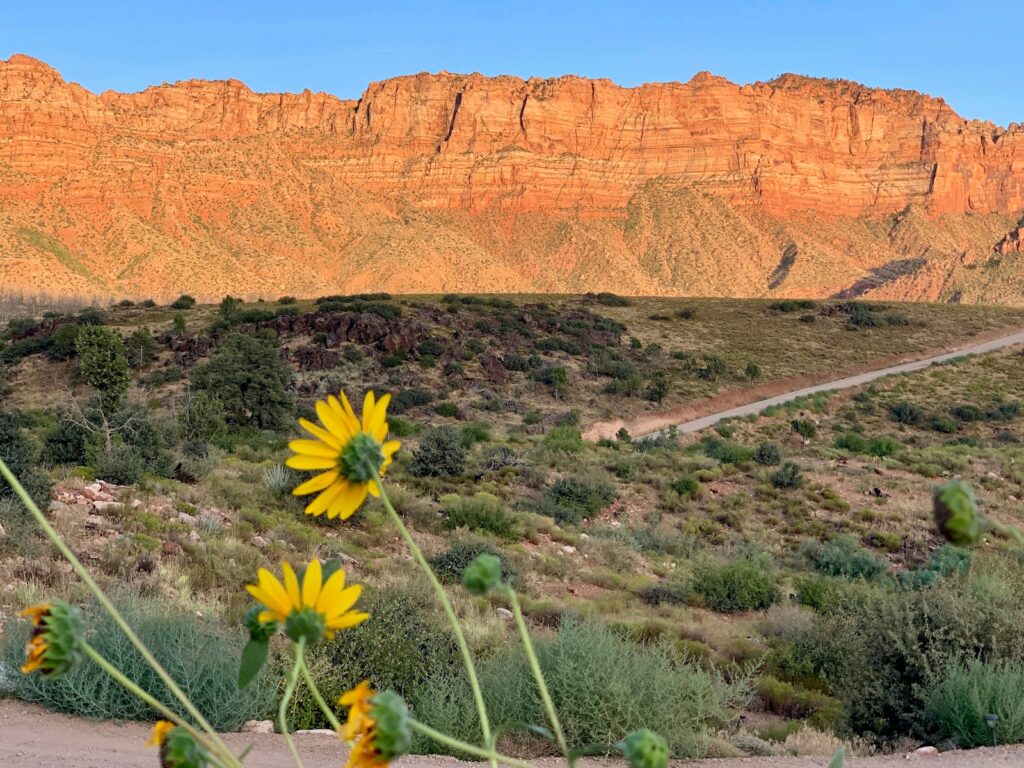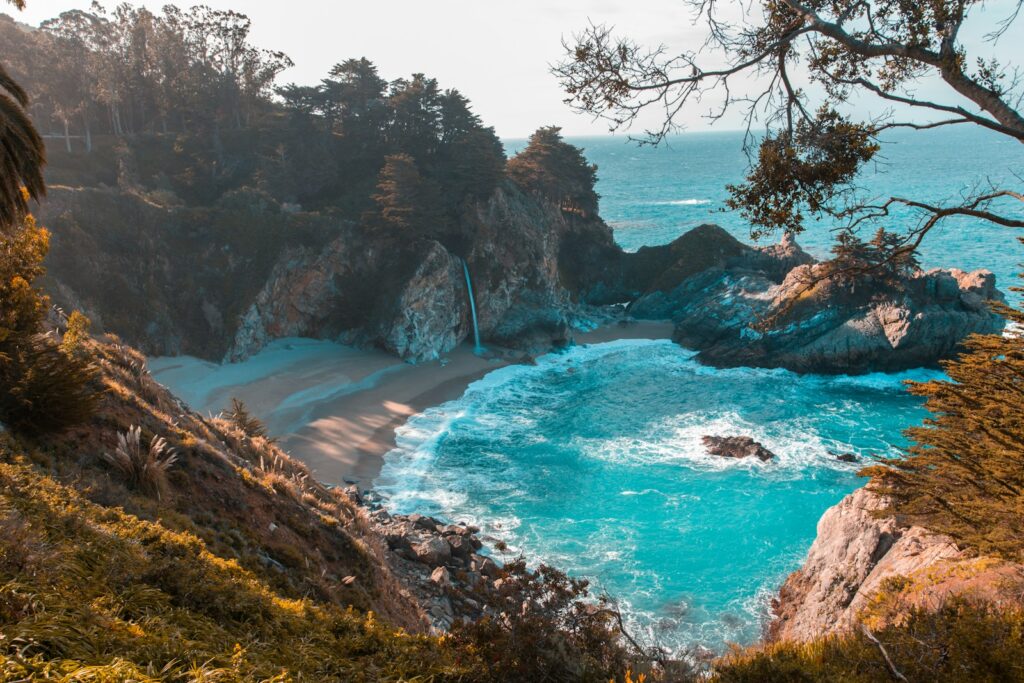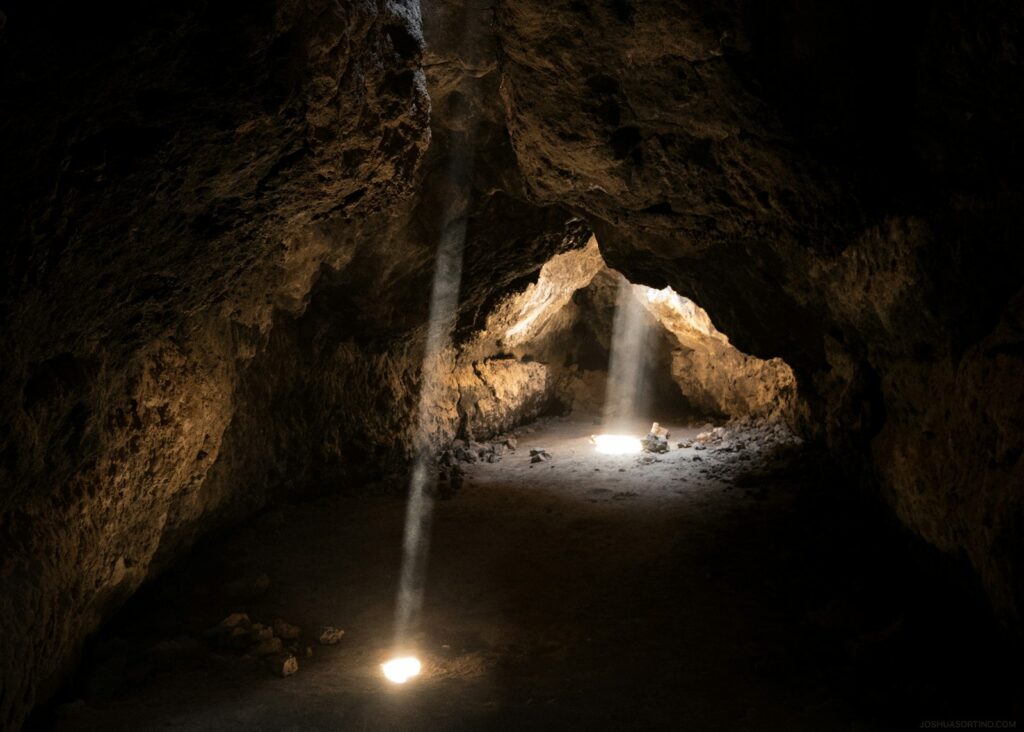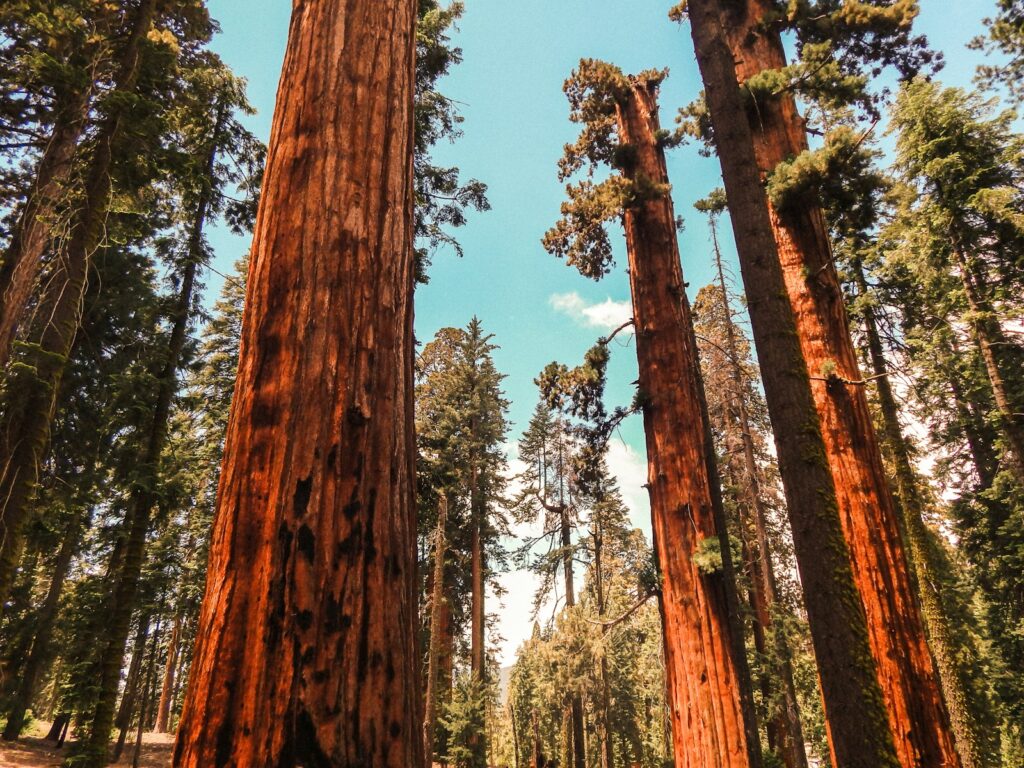America’s national parks draw millions of visitors each year, with iconic landmarks like Yosemite’s Half Dome and the Grand Canyon’s South Rim becoming almost mandatory photo stops. Yet beyond these well-trodden paths lies a treasure trove of lesser-known wonders waiting to be discovered. These hidden gems offer equally spectacular experiences without the crowds, providing more intimate connections with nature. From secluded valleys and forgotten trails to overlooked viewpoints and secret swimming holes, these spots represent the true spirit of exploration that inspired the national park system in the first place. Join us as we venture beyond the visitor centers and popular overlooks to uncover the breathtaking sites that most park-goers never see.
The Quiet Side of Yellowstone: Bechler Region

While Old Faithful attracts throngs of visitors, Yellowstone’s southwestern Bechler region remains blissfully uncrowded, even during peak season. This remote backcountry area, often called “Cascade Corner,” boasts numerous spectacular waterfalls, thermal features, and lush meadows without the traffic jams common elsewhere in the park. Dunanda Falls, a 150-foot cascade where hot springs warm the plunge pool below, offers one of the park’s most magical swimming experiences for hikers willing to make the 9-mile trek. Wildlife viewing in this region often proves superior to more frequented areas, as animals roam undisturbed by constant human presence. Access requires effort—typically a multi-day backpacking adventure or a lengthy day hike—which perfectly explains why this paradise remains Yellowstone’s best-kept secret.
Grand Canyon’s Toroweap Overlook

While millions flock to the developed rims of the Grand Canyon, few venture to Toroweap Overlook (also called Tuweep), offering perhaps the most dramatic canyon vista in the entire park. Perched 3,000 feet directly above the Colorado River, this remote north rim viewpoint provides a vertigo-inducing perspective that makes the river appear close enough to touch. Unlike the main viewpoints with their protective railings and paved approaches, Toroweap delivers a raw, untamed experience with sheer, unfenced drops that command respect. Reaching this overlook requires navigating 60 miles of increasingly rough dirt roads that deteriorate from graded gravel to challenging 4×4 tracks, effectively filtering out casual tourists. The isolation and difficulty of access ensure that visitors who make the journey might share this spectacular viewpoint with only a handful of others, or perhaps no one at all.
Yosemite’s Hetch Hetchy Valley

While Yosemite Valley draws overwhelming crowds, its geological twin—Hetch Hetchy Valley—receives just a fraction of the visitors despite offering comparable grandeur. This magnificent valley, once described by John Muir as “a wonderfully exact counterpart of the great Yosemite,” now sits partially submerged beneath reservoir waters after the controversial O’Shaughnessy Dam construction in 1923. Despite this alteration, Hetch Hetchy remains spectacularly beautiful, with massive waterfalls cascading down granite walls and significantly fewer people to share the views. The five-mile round-trip hike to Wapama Falls crosses the O’Shaughnessy Dam before traversing a scenic route along the reservoir to reach thundering cascades that sometimes flood the footbridges during spring runoff. For even more solitude, the trail continuing to Rancheria Falls adds another four miles and reveals pristine wilderness that feels worlds away from Yosemite’s more touristed areas.
Acadia’s Schoodic Peninsula

While Mount Desert Island hosts the majority of Acadia National Park’s visitors, the separate Schoodic Peninsula section offers equally stunning coastal scenery with a fraction of the crowds. This mainland portion of the park features dramatic pink granite shorelines where powerful Atlantic waves crash against jagged rocks, creating spectacular eruptions of spray during storms. Unlike the often-congested Park Loop Road on the main island, Schoodic’s one-way drive provides similar ocean vistas and pullouts with minimal traffic, even during summer months. The summit of Schoodic Head, though modest at 440 feet, rewards hikers with panoramic views extending from Maine’s bold coast to the mountains of Mount Desert Island across the bay. Local wildlife, including bald eagles, peregrine falcons, and harbor seals, often proves easier to spot here without the disturbance of larger crowds.
Zion’s Kolob Canyons

While Zion Canyon’s shuttles transport thousands of visitors daily during high season, the park’s northwestern Kolob Canyons section remains comparatively serene. This area features spectacular finger canyons carved into the colorful Navajo sandstone, creating an entirely different landscape from the main canyon but with equally impressive dimensions and formations. The five-mile Timber Creek Overlook Trail follows a high ridge offering sweeping panoramas of massive 2,000-foot cliff walls glowing red and orange in the afternoon light. For more adventurous hikers, the LaVerkin Creek Trail leads to one of the world’s largest free-standing arches—Kolob Arch—spanning 287 feet yet seen by relatively few park visitors. The Kolob Canyons Road itself provides a stunning scenic drive with numerous viewpoints and significantly less traffic than Zion’s main canyon, making it possible to enjoy moments of solitude even during peak tourist season.
Olympic’s Shi Shi Beach and Point of Arches

While Olympic National Park’s Hurricane Ridge and Hoh Rainforest draw consistent crowds, the remote northern coastal section containing Shi Shi Beach remains relatively untouched. This pristine two-mile stretch of wilderness shoreline features some of the Pacific Northwest’s most photogenic scenery, culminating at Point of Arches where a series of sea stacks and natural stone arches create a photographer’s paradise, especially at sunset. Tidal pools teem with colorful sea stars, anemones, and other marine life rarely seen in such abundance at more accessible beaches. Reaching this coastal gem requires determination—a moderate 4-mile hike through muddy forest trails followed by a steep descent down bluffs to the beach—which effectively limits visitation and preserves its wild character. Camping on the beach (with proper permits) offers one of the most memorable overnight experiences in the national park system, falling asleep to crashing waves against the dramatic backdrop of seastacks silhouetted against the darkening sky.
Great Smoky Mountains’ Cataloochee Valley

While Cades Cove draws bumper-to-bumper traffic, the equally historical Cataloochee Valley on the park’s eastern side receives just a fraction of the visitors. This secluded valley preserves some of the best-maintained historic structures in the park, including the elegant Palmer House, a two-story frame house unusually sophisticated for mountain architecture of its era. The valley offers excellent wildlife viewing opportunities, particularly for observing the reintroduced elk herd that often grazes in the open fields during early morning and evening hours. Remnants of human history are scattered throughout the valley, including apple orchards, churches, and a schoolhouse that tell the story of the thriving community that existed before the park’s establishment. Access requires navigating a winding, partially gravel road that discourages casual visitors but rewards those who make the journey with one of the most peaceful and authentic experiences available in America’s most visited national park.
Arches’ Klondike Bluffs

While Delicate Arch draws photographers by the hundreds at sunset, the remote Klondike Bluffs section of Arches National Park offers similar red rock splendor with welcome solitude. This less-developed northern area contains impressive formations including Tower Arch, a massive opening spanning 92 feet with a distinctive chunky, robust character unlike the more delicate arches found elsewhere in the park. The sandy trail to Tower Arch winds through a labyrinth of sandstone fins and rock formations where visitors can often hike for hours without encountering other people. Several unmarked arches and windows await discovery by observant hikers willing to explore the slickrock areas off the main trail, offering a genuine sense of discovery rarely experienced at the park’s more popular sites. Access requires navigating unpaved roads that become impassable when wet, a natural barrier that helps preserve the wilderness experience in this section of an otherwise heavily visited park.
Mammoth Cave’s Wild Cave Tour

While most Mammoth Cave visitors experience only the developed walkways and electric lighting of standard tours, the Wild Cave Tour reveals a completely different underground wilderness few ever witness. This challenging six-hour expedition takes physically fit participants through undeveloped passages requiring crawling through tight spaces as small as 9 inches tall and navigating canyon-like passages far from the developed trails. Participants experience total darkness while exploring virgin cave passages adorned with pristine formations that have never been touched by human hands. The tour traverses five miles of rugged underground terrain, including climbing, crawling, and squeezing through tight spaces with names like “Bare Hole” and “Fat Man’s Misery” that hint at the physical challenges involved. Despite being within the world’s longest known cave system, this experience remains unknown to the vast majority of the park’s half-million annual visitors due to the physical requirements and limited group sizes.
Shenandoah’s Hazel Country

While Skyline Drive’s overlooks attract most park visitors, the abandoned Hazel Country area in Shenandoah’s Central District tells the forgotten human story of the Blue Ridge Mountains. This remote section contains the highest concentration of preserved homesteads, family cemeteries, and other remnants of the mountain communities displaced during the park’s creation in the 1930s. Hikers on the Hazel Mountain and Catlett Mountain trails pass stone walls, old orchards, and chimney remains that bear silent witness to the generations who called these mountains home before government relocation. The Hannah Run Trail leads to some of the most poignant cemetery sites, where headstones dating back to the early 19th century remain maintained by descendants who retain access rights. Unlike the more manicured historical areas in the park, Hazel Country’s ruins feel genuinely discovered rather than curated, creating a more authentic connection to the mountain people’s story.
Canyonlands’ Maze District

While Island in the Sky’s Grand View Point draws tour buses daily, Canyonlands’ remote Maze District represents wilderness solitude in its purest form. This labyrinthine complex of deeply cut canyons and towering red rock formations constitutes one of the most logistically challenging and isolated areas in the National Park System, receiving fewer than 2,000 visitors annually compared to hundreds of thousands in the park’s more accessible districts. The otherworldly terrain features disorienting passages where navigation becomes a serious skill rather than a casual afterthought, earning its name honestly through confusing routes that often lead to dead ends or unexpected drops. Archaeological sites including pictographs like the famous Harvest Scene panel provide windows into ancient cultures that somehow thrived in this harsh environment. Access requires high-clearance 4WD vehicles, serious backcountry expertise, complete self-sufficiency including carrying all water, and typically a minimum three-day commitment—factors that ensure this district remains Canyonlands’ ultimate hidden gem.
Everglades’ Wilderness Waterway

While airboat tours showcase a fraction of the Everglades, the 99-mile Wilderness Waterway through its western backcountry reveals the true character of this river of grass. This challenging multi-day paddling route winds through mangrove tunnels, open bays, and sawgrass prairies where paddlers can travel for days seeing more alligators, dolphins, and manatees than people. Strategically placed chickees (elevated camping platforms) and ground sites offer the rare experience of spending nights fully immersed in the primeval sounds of America’s largest subtropical wilderness. Tidal influences create navigational challenges as routes that appear passable at high tide may become impassable mud flats hours later, requiring careful planning and navigation skills. The remoteness of this watery trail provides unparalleled wildlife viewing opportunities, including rare species like the endangered Florida panther and American crocodile that avoid more heavily trafficked areas of the park.
Redwood’s Tall Trees Grove

While Lady Bird Johnson Grove receives busloads of visitors, the more remote Tall Trees Grove harbors some of the world’s tallest living organisms in comparative solitude. This secluded grove once contained the Libbey Tree, which at 368 feet was the world’s tallest known tree when discovered in 1963, helping spark the national movement that created Redwood National Park. Access limitations—including a free permit system, locked gate, and steep 1.3-mile descent into the valley—effectively limit visitation to those willing to make the effort, resulting in an often-empty grove despite its superlative status. Unlike more accessible redwood groves, the Tall Trees area allows visitors to experience these giants in profound silence, often with no human sounds beyond their own footsteps on the soft forest floor. The alluvial flat along Redwood Creek creates perfect growing conditions for these massive trees, which appear even more imposing when viewed in isolation rather than among crowds of visitors.
Conclusion

National parks protect America’s most treasured landscapes, but the true magic often hides beyond the visitor center maps and guided tours. These hidden gems reward those willing to venture just a little further, research more deeply, or simply ask a ranger: “Where would you go if you had the day off?” By seeking out these less-traveled corners of our national treasures, visitors can experience the parks as they were meant to be—places of discovery, solitude, and connection with nature. The next time you visit a national park, consider leaving the crowds behind to find your own special place among these protected lands. The most memorable experiences often wait just beyond the well-worn path, where the true spirit of the national parks still thrives in peaceful obscurity.

